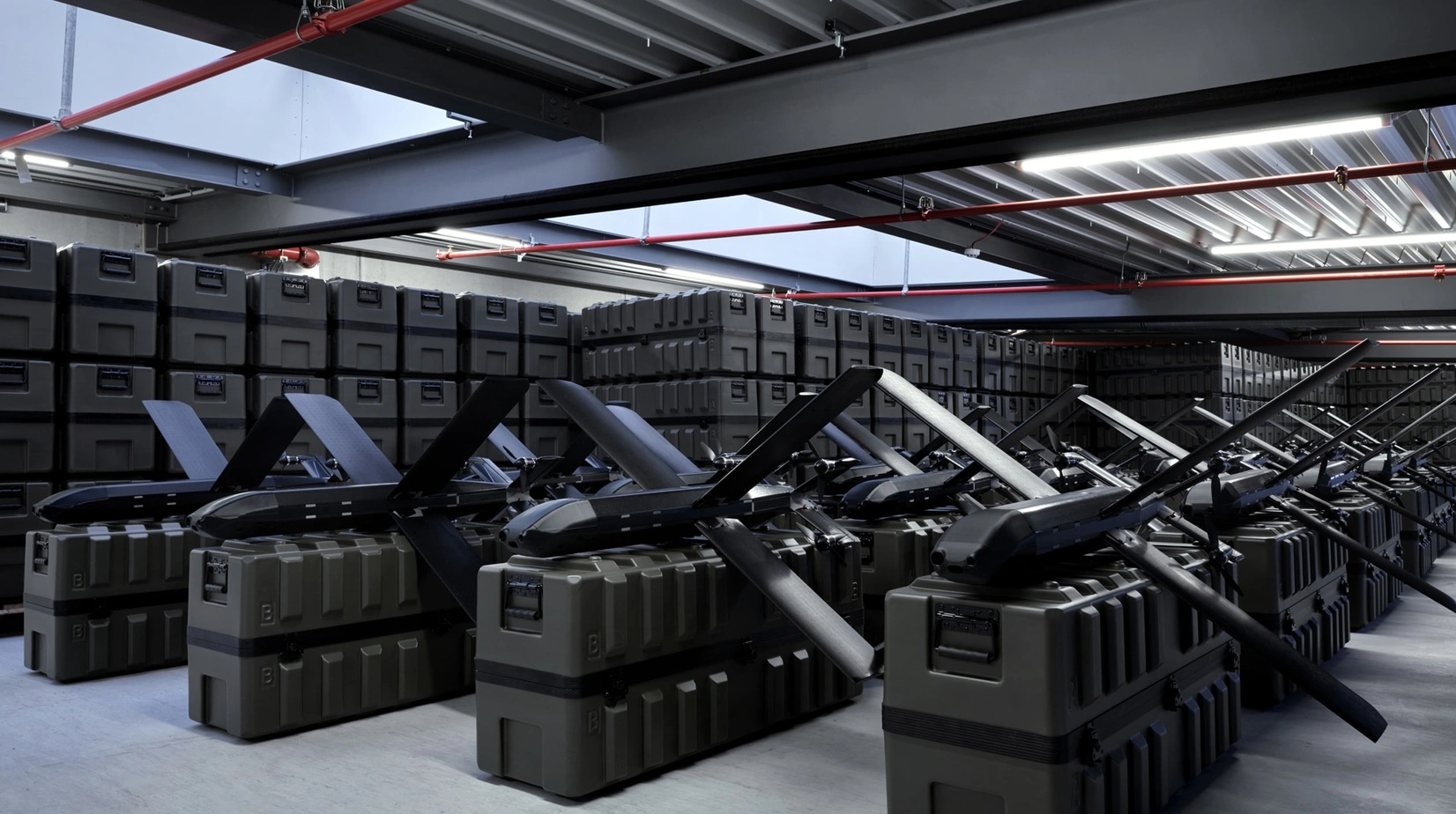From Plywood to Precision: How German Drones Are Changing Ukraine’s Battlefield Strategy
In an era of hypersonic missiles and AI-powered weapons, Ukraine has found an unlikely advantage in its defense against Russian forces: plywood drones. These unassuming yet deadly effective unmanned aerial vehicles, supplied by Germany, are proving that sometimes the most effective military technology combines the simplest materials with the most sophisticated guidance systems.
The Plywood Warriors: Helsing’s HF-1 Drones
The Helsing HF-1, a German-made loitering munition (commonly known as a kamikaze drone), has become one of Ukraine’s most effective tactical weapons. What makes it unique is its primary construction material—plywood.
“The material from which the plane is made does not matter in principle, and you can use any material as long as it flies,” explained a Ukrainian drone operator with the callsign Romero in an interview with BILD. “In our case, being made of wood makes it even better because it’s radar-transparent and better suited for operation at long distances.”
This seemingly low-tech approach serves a highly strategic purpose. According to reporting from Combat Operators, the wooden fuselage significantly reduces the drone’s radar cross-section and acts as a natural thermal insulator, making it harder for Russian forces to detect with infrared or heat-seeking systems.
Despite its humble exterior, the HF-1 packs impressive capabilities:
- Approximately one hour of flight time.
- Operational range of 45-50 kilometers (with technical capability of reaching up to 100 kilometers).
- Advanced targeting system that maintains lock even if the operator loses control.
- AI capabilities that can independently detect, recognize, and target enemies.
According to Defense Express, Germany announced plans to provide 4,000 HF-1 drones to Ukraine in fall 2024, with approximately 1,000 delivered as of early April 2025.
HF-1 in Action
Ukrainian Special Operations Forces have been employing these plywood drones with devastating effectiveness. Footage obtained by one source shows Ukrainian HF-1 drones destroying high-value Russian assets, including Pantsir-S1 short-range air defense systems and Buk-M3 radar units.
A Ukrainian SOF commander identified by the callsign Destro told Militarnyi that the optimal operating distance of the HF-1 is between 45 and 50 kilometers, allowing them to reach areas where Russian forces feel relatively safe.
“Our drone is equipped with a homing system that helps to capture a target and lock until it’s hit,” Romero explained to Defense Express. “This is a plus because if we lose contact with the drone—the video [signal] or control—the drone reaches the target and strikes it.”
This capability is particularly valuable in contested electronic warfare environments, where signal jamming is common. “From the moment the target is locked on, the aircraft takes control and gets to the target independently,” he added.
The Next Generation: HX-2 Strike Drones
Building on the success of the HF-1, Germany has committed to delivering 6,000 more advanced HX-2 AI-enabled strike drones to Ukraine, according to The Defense Post and Breaking Defense.
The HX-2 represents a significant upgrade with:
- “Electrically propelled X-wing precision munition with up to 100 km range,” as described by Newsweek.
- Enhanced loitering time and improved AI-powered autonomous target recognition.
- Ability to operate in coordinated swarms, allowing a single operator to direct multiple drones against dispersed targets simultaneously.
Helsing, the German defense technology company behind both drone models, has built a dedicated production facility—dubbed the “Resilience Factory”—in southern Germany specifically for manufacturing these drones at scale. According to Defense Blog, the facility has an initial monthly production capacity of over 1,000 HX-2 drones.
Germany’s Broader Drone Support
The plywood HF-1 and advanced HX-2 drones are just part of Germany’s unmanned systems support to Ukraine. According to the German Federal Government’s official list of military aid, Germany has also supplied:
- 316 Vector UAVs.
- 30 RQ-35 Heidrun drones.
- Gereon RCS autonomous ground drones from ARX Robotics.
The latter, according to Defence Blog, are designed for a different purpose: transporting supplies and evacuating wounded soldiers from combat zones, enhancing battlefield logistics while reducing risks for frontline troops.
The Tactical Impact
The combination of low-tech construction and high-tech guidance systems has proven remarkably effective on the battlefield. United24 Media reports that Ukrainian forces are using these drones to target air defense systems, logistics hubs, supply warehouses, and armored vehicles.
What makes them particularly effective is their ability to reach areas where Russian forces feel secure. “The loitering munition brings very unpleasant surprises to the Russians, as it can reach the calmer places in the rear where the enemy forces feel relatively safe,” a Ukrainian drone operator told Defense Express.
This capability allows Ukrainian forces to strike targets during staging, movement to the front line, or in locations where Russian forces are less alert—multiplying the psychological impact beyond the physical damage inflicted.
Wood and Chips: An Unexpected Innovation
The wooden drones represent a fascinating intersection of old and new technologies. In an age where military hardware often depends on advanced composite materials and exotic alloys, the deliberate choice to use plywood—one of humanity’s oldest engineered materials—alongside cutting-edge AI guidance systems is a remarkable innovation.
This approach offers several advantages:
- Cost-effectiveness: Simple materials reduce production costs.
- Stealth capabilities: Wood is naturally radar-transparent.
- Production scalability: Easier to manufacture in large quantities.
- Resource availability: Less dependent on scarce specialized materials
As Ukraine and its allies continue to seek asymmetric advantages against Russia’s numerical superiority in conventional weapons, these plywood drones demonstrate that sometimes the most effective military innovations don’t require exotic materials—just creative thinking and strategic application of available technologies.
Featured image: Helsing press release.

